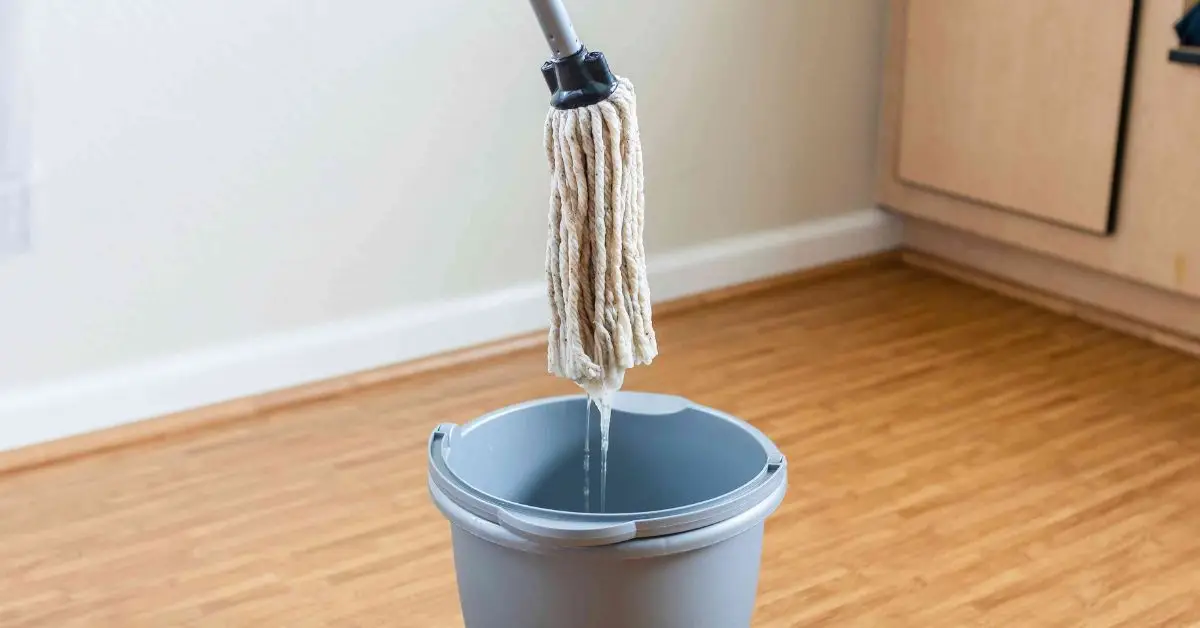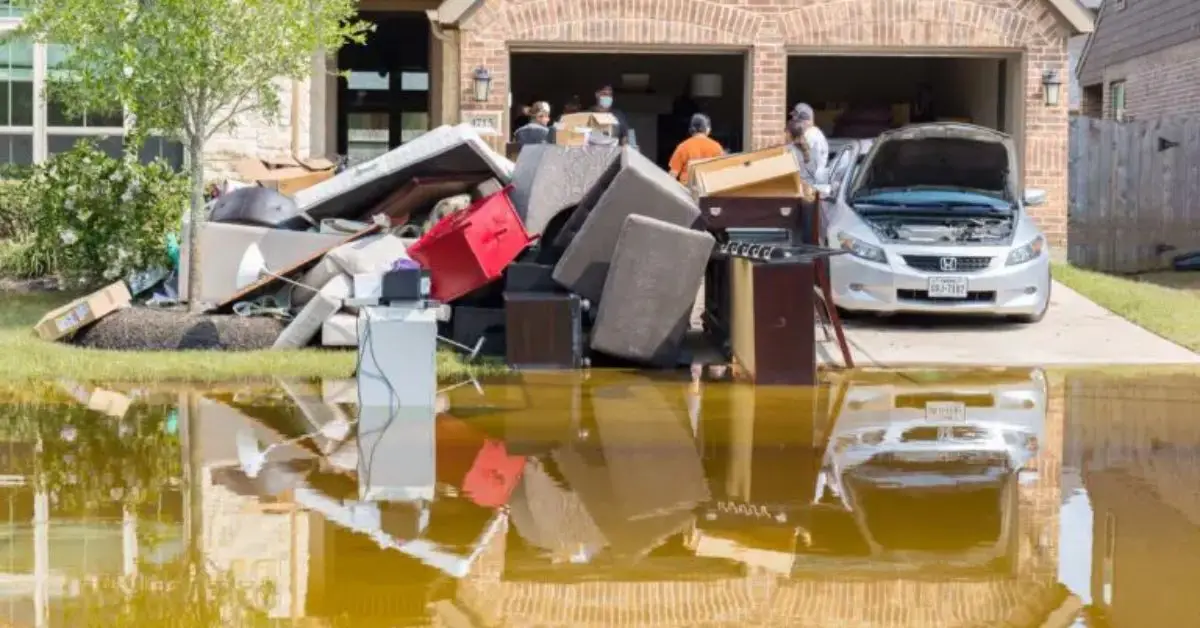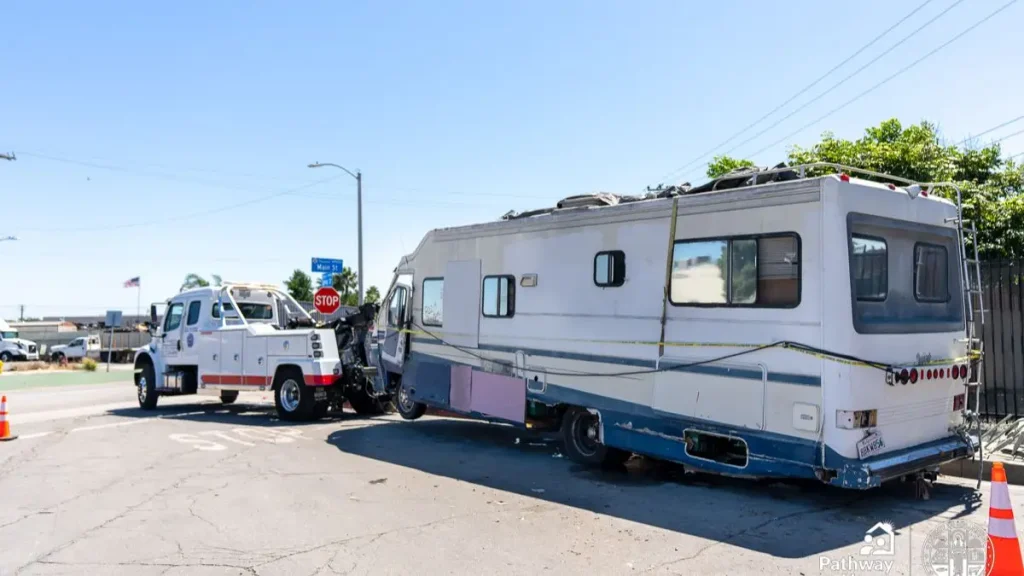7 Life-Saving Things You Must Do Right After Your House Floods
You never think it’ll happen to you—until it does. One moment, you’re watching the rain. The next, your living room is filling with water. And just like that, your home doesn’t feel safe anymore.
If your house has just flooded, you’re likely in panic mode. What do you grab first? Is it safe to go back in? Who do you call? What about insurance? The clock is ticking, and every decision feels urgent.
I’ve written this guide for one reason: to help you think clearly in a moment that feels anything but. These aren’t generic tips copied from an insurance brochure. They’re the exact steps you need to take—starting right now—to protect your family, your home, and your peace of mind.
Even if the flood’s already passed, there’s still time to prevent bigger damage. So take a breath. Follow these seven steps. We’ll walk through them together.
1. First 10 Minutes: Prioritize Safety Over Salvage
Let me say this clearly: if your house is flooding right now, your first move isn’t to save the couch or grab the laptop. It’s to stay safe. That’s it.
Floods create fast, unpredictable dangers. Electrical current in standing water. Gas leaks. Hidden structural damage. Even one wrong step can cause injury—or worse.
If you’re inside and water is rising, get everyone—kids, elderly family, pets—to higher ground immediately. Forget your belongings for now. Focus on getting out safely.
If it’s safe and you know where the shutoff is, turn off your home’s main electricity and gas. In many homes, the breaker box is outside near the meter. But if you have to walk through water to reach it—don’t. It’s not worth the risk.
And if you’re outside looking in, don’t go back inside yet. You don’t know what’s happening inside the walls, especially if the flooding was fast or came from a storm surge. Floors can weaken. Ceilings can cave. Wait until a professional says it’s safe.
You only get one shot at staying alive. Your stuff can wait. You can file a claim later, dry out the furniture later, even come back with pros to help. But right now, your safety is the only thing that matters.
Have you ever been through a home flood? What did you do in those first few minutes? Your story might help someone else reading this in real time. Share it below.
2. First 30 Minutes: Document Everything Before You Touch Anything
Once you know everyone’s safe and the danger has passed, don’t start cleaning up just yet. I know it’s tempting to grab a mop or move furniture, but this is your window to document the damage—and it’s a step that most people skip in the rush.

Blogs – Yashraj Singh
Take out your phone and start recording. Walk through the house, slowly. Capture wide-angle shots of each room, then get close-ups of anything damaged—floorboards, drywall, appliances, soaked furniture, electronics. Open drawers and closets if you can do so safely. Take note of water levels on walls or furniture.
If you can, record a video walkthrough with voice notes: “This is the living room—water reached the outlets. That’s the sofa we bought last year. These cabinets are full of kitchen tools.” Trust me, you won’t remember all the details later when the insurance adjuster shows up.
Check timestamps. Back everything up to cloud storage immediately—Google Drive, iCloud, Dropbox—anywhere off your phone. You don’t want to lose your only proof if your device gets damaged.
And don’t throw anything away yet, no matter how ruined it looks. Keep damaged items in a corner or in bags until your insurance provider gives you the green light. Some adjusters will want to see everything in person.
You might feel like you’re wasting time while your house sits in water, but this step could be the difference between a denied claim and a full payout. It’s not about being dramatic—it’s about protecting your future.
Have you ever had to file a home insurance claim after water damage? What proof did they ask for? Let others know what helped—or what you wish you’d done differently.
3. Stop the Water Source (If It’s Still Coming In)
If water is still coming in, you have to act fast—but smart. The longer the flow continues, the more damage you’ll have to deal with later. And the more expensive it’ll get.
Start by identifying where the water is coming from. If it’s a burst pipe inside the house, shut off your home’s main water valve immediately. In most U.S. homes, you’ll find it either in the basement, near the water heater, or on an exterior wall facing the street. If you’re in an apartment or condo, contact building maintenance or emergency plumbing services right away.
If the flooding is coming from outside—heavy rain, overflowing drains, or rising groundwater—your options are more limited. Try placing sandbags or water barriers at entry points like doors and basement windows. You can also use towels or plastic sheeting as a temporary block if you don’t have proper supplies.
For roof leaks or gutter overflow, safely redirect water using long-handled brooms or extension pipes. Don’t climb on the roof. It’s not worth risking a fall.
If you live in a flood-prone area and don’t already own a water pump or wet vac, this is the moment to consider it for the future. But right now, focus on stopping the flow at its source.
And if you can’t stop it, document it. Take photos or video of the water actively entering your home. It strengthens your insurance case and shows that you did everything you could.
If your basement is flooded, there are specific urgent steps you need to take to minimize damage. Check out our detailed guide on 9 Things to Do Immediately After Basement Flooding for targeted advice.
Ever had to deal with a sudden pipe burst or water leak during a storm? Share how you handled it—it might save someone else hours of panic.
4. Contact Emergency Help and Your Insurance Provider
Once the immediate danger is under control, it’s time to make the calls that matter. This part isn’t just about cleanup—it’s about documenting your case and getting help lined up before the lines get too long.
Start with your home insurance provider. The sooner you report the damage, the sooner they can open a claim and assign an adjuster. Most companies have 24/7 hotlines or mobile apps that allow you to file within minutes. Keep your policy number ready, and mention if you’ve already started documenting with photos or videos.
If you don’t have flood insurance, call them anyway. Some homeowners or renters policies may still cover certain types of water damage, depending on how it happened. Either way, you need it on record.
Next, reach out to a licensed water damage restoration company—preferably one that’s IICRC-certified. They’ll handle the heavy-duty stuff: water extraction, mold prevention, structural drying. These companies often book out fast during floods, so don’t wait.
Also consider calling your local non-emergency fire department, building inspector, or public works department if:
- There’s structural damage
- You smell gas or sewage
- You’re unsure about the safety of your home
Many cities also offer emergency assistance lines or disaster relief services. Keep those numbers saved—you never know when you’ll need them. Installing motion sensor flood lights can improve your home’s security during and after floods by deterring unwanted visitors and helping you navigate safely in low-light conditions. Learn more about these useful devices in our guide on Motion Sensor Flood Lights.
And here’s a tip: log every call. Write down who you spoke with, when, and what was said. These records matter when you’re chasing reimbursement or explaining delays weeks later.
Have you ever filed a flood claim or dealt with restoration companies before? Was the process smooth—or frustrating? Share your tips, so others know what to expect.
5. Remove Water Safely — Don’t Just Start Mopping
Once the water stops coming in and you’ve documented everything, it’s natural to want to start cleaning. But this part needs strategy, not speed. If you remove water the wrong way, you could damage your home even more—or worse, put yourself at risk.

If there’s more than a couple of inches of standing water, don’t try to clear it out with buckets or a regular vacuum. Use a wet/dry shop vac—never a standard one—and only plug it into outlets that haven’t been exposed to water. If in doubt, wait for a restoration team.
Start from the lowest point in the room and work your way out. Use push brooms to guide water toward drains if available. Towels and rags might help for light surface water, but they’re no match for deep saturation.
For minor flooding, you can also use a manual water pump or siphon hoses to redirect water away from your home. Aim it toward storm drains or driveways, not just your yard—it’ll just come back.
If the water contains mud, sewage, or smells off, treat it as contaminated. Wear gloves, rubber boots, and a mask. Anything you touch in that zone should be considered hazardous until cleaned properly.
And don’t start tearing up flooring or drywall right away. Let the pros assess how deep the moisture goes. You could accidentally expose wiring or make the damage worse.
Remember: this isn’t a race. It’s about doing it safely, methodically, and with a plan.
Have you ever used a wet vac or pump during a home emergency? What worked—and what didn’t? Drop your advice for others facing their first cleanup.
6. Dry Out the House — Speed Is Everything
Once the water’s out, your real enemy becomes invisible: moisture. If you don’t dry your home quickly—and thoroughly—mold can start growing in just 24 to 48 hours. That’s not an exaggeration. And once it spreads, it becomes a much bigger (and more expensive) problem.

Start by opening every window and door you can, if the weather allows. You need cross-ventilation. Set up fans in every room to keep air moving. Point them toward wet areas, corners, and floors. If you own a dehumidifier, now’s the time to plug it in and run it nonstop.
Take out rugs, cushions, curtains, and any upholstered furniture. Don’t leave them to “air dry” indoors—they’ll trap humidity. Move them to a sunny spot outside or a garage where airflow is better.
If your carpet is soaked, it may need to be pulled up entirely. Same goes for water-damaged baseboards and drywall. Don’t make the call yourself—get an assessment if you’re unsure. But don’t wait too long to bring someone in.
Pay special attention to closed-off spaces: closets, cabinets, behind appliances. These are prime spots for mold growth because air doesn’t circulate well. Wipe them down with a disinfectant solution and leave them open to dry.
For electronics, use silica gel packets or put them in sealed containers with uncooked rice if you can’t get them professionally dried. Avoid powering them on until you’re sure they’re moisture-free.
And yes, it’s a lot. But every fan you turn on, every wet item you remove, every hour you shave off moisture time—saves you days of future repair.
What tricks have helped you dry out your home after a leak or flood? Fans, dehumidifiers, heaters—drop your go-to gear or hacks in the comments.
7. Don’t Throw Anything Away Without Logging It
By this point, you’ve probably got piles of wet, ruined stuff—and the urge to get it out of your house is strong. But wait. If you toss things too soon, you could lose thousands in claim value.
Every damaged item, no matter how obvious the loss, should be documented before it leaves your home. That means photos, serial numbers, brand names, purchase estimates—anything that proves what it was and what condition it’s now in.
Create a log or spreadsheet if you can. List each item with:
- A brief description (“Samsung 55-inch TV, Model XYZ123”)
- Estimated value or original price
- Whether it’s salvageable or total loss
If you’re not a spreadsheet person, even a written list in a notebook—paired with dated photos—is better than nothing.
For large or recognizable items, don’t bag them up right away. Place them in a corner, garage, or covered porch if possible. Your insurance adjuster may want to inspect them in person. Some companies have strict rules about what counts as verified loss.
And don’t forget small stuff. Kitchen tools, kids’ toys, wall decor—it all adds up. You’d be surprised how quickly “minor things” turn into hundreds or even thousands of dollars when it’s time to rebuild.
This part is tedious, especially when all you want to do is move on. But it protects you. You’ve already suffered the loss—you shouldn’t have to fight for compensation because you acted too fast. When rebuilding or repairing after a flood, it’s important to know which home upgrades require professional licensing to avoid costly legal trouble. Don’t miss our list of 6 Surprising Home Upgrades That Need a License—even for something as simple as painting.
Have you ever had a claim rejected because you couldn’t prove something was damaged? Tell us what you wish you had done differently—it could save someone else a big mistake.
What to Do (and What Not to Do) After a Flood
In the middle of a home disaster, it’s easy to forget what you’ve read or second-guess every decision. That’s why I always recommend keeping a simple, no-nonsense reference like this on hand. Use it to stay grounded and avoid mistakes that can make things worse.
| Do This | Don’t Do This |
|---|---|
| Shut off electricity and gas if safe | Walk through standing water near outlets or appliances |
| Take photos/videos before moving anything | Start cleaning before documenting damage |
| Call your insurer and file a claim early | Wait days before notifying your provider |
| Use proper gear (boots, gloves, mask) when entering home | Assume the water is clean or harmless |
| Remove rugs, cushions, and fabrics to dry immediately | Leave wet items inside hoping they’ll dry on their own |
| Set up fans and dehumidifiers to speed drying | Rely only on open windows in humid weather |
| Keep damaged items until inspected | Toss everything out without proof or records |
This table isn’t about being perfect—it’s about not missing the basics when your brain is in survival mode. You can’t think clearly when you’re overwhelmed, but a simple checklist like this can help you slow down and make smart choices.
Would a printable version of this help you? If yes, let me know below. I’m putting together a free one-pager version readers can save or print for emergencies.
What Real People and Experts Say: Lessons from the Field
When your home floods, advice from official agencies is important—but there’s something powerful about hearing from people who’ve lived through it. Their experience fills in the gaps that manuals miss. Here’s what others have shared online about what really helps—and what doesn’t.
On Reddit, one homeowner in Austin wrote after a flash flood:
“The biggest mistake I made? Not pulling up the carpet right away. Mold showed up in three days, and we had to replace the subfloor too.”
r/Austin
Another user on r/HomeImprovement shared:
“Save every receipt, even for gloves and trash bags. Our insurance reimbursed us for cleanup supplies, but only because we had proof.”
These aren’t just horror stories—they’re reminders that you don’t have to figure this out alone. People have been through it, learned from it, and are willing to help. Listen to them.
Have you come across a tip, trick, or story that helped you during a flood? Drop it in the comments—it could make a huge difference for someone who’s dealing with this for the first time.
Taking Control After the Flood: Your Next Steps
Flooding can feel overwhelming. But remember, every step you take—from prioritizing safety to carefully documenting damage—is you taking control back from the chaos.
Once you’ve followed these urgent actions, focus on rebuilding your space—and your peace of mind. Reach out to local community resources, connect with restoration experts, and don’t hesitate to ask for help.
Flood damage isn’t just about property—it’s about your home, your memories, and your sense of security. Give yourself permission to feel frustrated or anxious. It’s normal. But also know that with the right steps, you’re setting the stage for recovery.
If you’re facing a flood or have recently dealt with one, I want to hear from you. What was your biggest challenge? What advice would you give someone going through this now?
Leave a comment below. Sharing your experience could be exactly the help someone else needs today.
For more practical guides and expert tips on protecting and improving your home, visit Build Like New. We’re here to help you rebuild smarter and safer every step of the way.
Disclaimer: This article is for informational purposes only and does not replace professional advice. Always consult with licensed professionals for emergencies and insurance claims.


